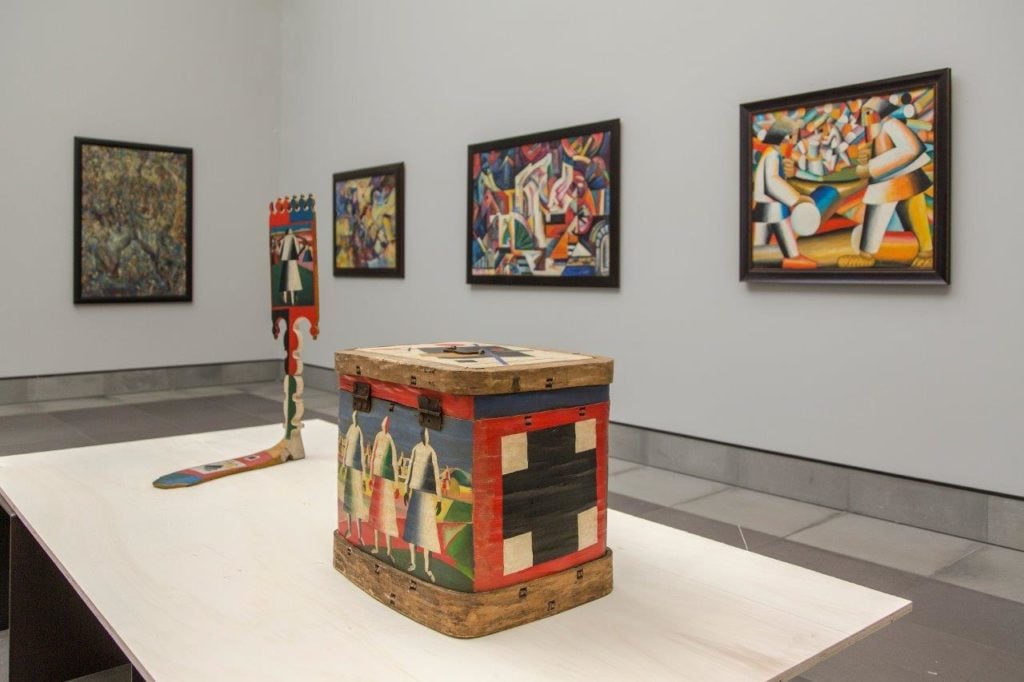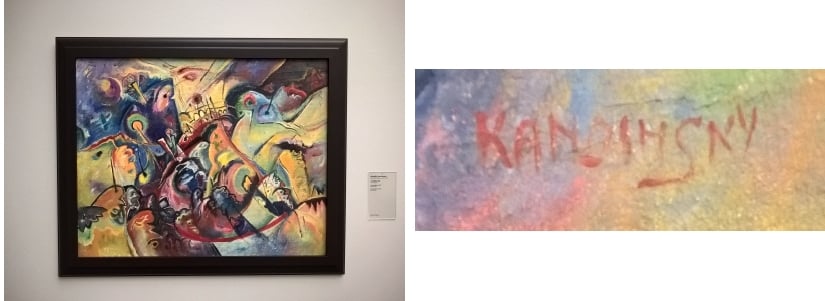Art & Exhibitions
Belgian Museum Removes Show of Disputed Russian Avant-Garde Works After Damning Exposé
The suspect works come from Igor and Olga Toporovsky’s Dieleghem Foundation.

The suspect works come from Igor and Olga Toporovsky’s Dieleghem Foundation.

Sarah Cascone

Twenty-four Russian Modernist works at the Museum voor Schone Kunsten in Ghent have been removed from view following the publication of an open letter signed by 10 leading experts in the field and a 3,000-word exposé in the Art Newspaper questioning their authenticity.
The works were on loan from the Dieleghem Foundation, a registered charity owned by Brussels-based Russian businessman and art collector Igor Toporovsky and his wife Olga. But they had no exhibition history or traceable sales records and had never before been reproduced in scholarly publications, according to the experts.
After the open letter was published on January 15, the museum announced plans to create a committee that would examine a handful of works in the display. But the majority were expected to remain on view until the committee’s findings were released next month.
The investigation accelerated yesterday, when a copy of the Art Newspaper article was delivered to the Flemish Culture Minister Sven Gatz. Hours later, nearly all of the works in the display—24 of 26—were removed from view. The presentation, “Russian Modernism 1910–30,” which opened in October, included works purportedly by artists including Wassily Kandinsky, Kazimir Malevich, Alexander Rodchenko, and Vladimir Tatlin.
A statement emailed to artnet News by the museum acknowledged that the paintings “have caused quite a stir” but insists the institution “followed the usual procedures for incoming loans and carried out a thorough art historical and comparative investigation into the works. The advice of several international art history experts was also sought.”

L: Wassily Kandinsky’s Composition (1917) and detail of signature with second ‘N’ in Cyrillic ‘H.’ Photo: Colin Gleadell. Image courtesy of the Museum of Fine Arts, Ghent.
Rather than employing a technical examination, the museum explained, it “assesses loans on the basis of confidential information from the lender regarding authenticity and provenance.” The museum added that the Dieleghem Foundation had supplied two certificates of material analysis conduced in France, “which confirm the authenticity of the artworks by Kandinsky and [Aleksandra] Exter.”
The Toporovskys have brushed up against art scandal before. One former prosecuting lawyer encountered their names in 2005 when he was investigating a fakes scandal known as the Preobrazhensky Affair. He found that Igor and Tatiana Preobrazhensky, who were convicted of selling bogus Russian paintings, had sold two works said to be by Malevich and Kandinsky on behalf of Toporovsky.
The lawyer, Nikita Semyonov, came across the couple again in 2013, when he was approached by an artist who claimed to have sold 50 paintings aping the Russian avant-garde to Toporovsky and a Russian art dealer. Semyonov told TAN that “comparing the photos of these paintings with photographs from the Ghent exhibition, I can see similarities.”

A known painting by Yury Annenkov (left) and a work on view at the contested exhibition in Ghent . Courtesy of Dieleghem Foundation (Synthetic landscape)
Though the Toporovskys offered numerous points of provenance for their collection, TAN systematically countered each and every claim. The publication even contested a museum catalogue supplied by the couple, which purportedly provides an exhibition history for two of the questionable works. The director of the museum in question told TAN the show never occurred and claimed the document was Photoshopped.
In a statement provided to artnet News, Olga Toporovsky restated the museum’s position. She noted that the foundation consulted experts and engaged in “intense dialogue” with the museum before the loans were approved, but agreed to submit the works for further examination.
The committee tasked with examining the works will be established by Sven Gatz, Belgium’s Minister of Culture; Annelies Storms, the Ghent Alderwoman for Culture; and Catherine de Zegher, director of the MSK Ghent.
Fakes have long plagued the market for Russian avant-garde art. In 2009, the auctioneer William MacDougall estimated that half the works in the category submitted to his auction house were inauthentic.
The letter that first called the Ghent exhibition into question was signed by dealers, curators, and collectors including James Butterwick, Richard Nagy, Ivor Braka, Natalia Murray, and Alex Lachmann.
In a statement, Butterwick told artnet News: “We support the decision made by the Flemish Minister of Culture and are looking forward to being granted access to the documents supporting the authenticity of the Ghent collection.”